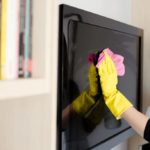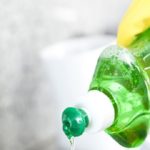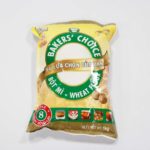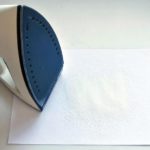After using for a while, cutting board’s surface could get dirty and hard to clean. Especially, the cuts on the cutting board easily hide dirt. If the cutting board is kept in a damp and dirty place, it is vulnerable to mold attack. Today, we will guide you a small method to easily clean the cutting board.

1. Use hot water, flour, salt, and white vinegar
First, we turn on the hot water tap and clean the cutting board. After the cutting board is washed with hot water, some dirt on the surface will be cleaned. The relatively high temperature can dissolve some stubborn stains on the surface.

Next, you take some flour and sprinkle it on the cutting board. Flour has a good moisture-absorbing effect, after long-term use, the cutting board will have many cuts on the surface, and inside these cuts, it’s easy to hide dirt, we can use flour to absorb some dirt in the gaps.

Then, we sprinkle some salt on the cutting board. Salt is granular, when we clean the cutting board, it can increase friction, even small dirt in some small gaps can be cleaned.

We pour some white vinegar into soak for about 5 minutes to let the white vinegar permeate into the cutting board surfaces. White vinegar is acidic which can soften and clean some stubborn stains on the surface.

After five minutes, we take out a steel brush to scrub. If the home cutting board is not seriously discolored or the surface is relatively clean, you can also use a sponge or brush to scrub.

Then, we place the cutting board under the faucet, rinse it with hot water and clean some debris on the surface. At this point, you will see a clean cutting board.

After the cutting board is cleaned, how we store it is also important. The cutting board should be placed upright or hung up, dried in a well-ventilated place. Do not expose the cutting board to the sun as it may crack. In addition, each time we clean the cutting board, we should promptly filter off the moisture on the surface, if we do not dry the moisture on the surface in time, the cutting board is prone to dampness and mold. If stored in a suitable environment, the cutting board at home will not get moldy or cracked no matter how long it is used.
2. Use lemon and salt
This is one of the most effective and safest ways.

Cut the lemon in half and squeeze the juice or you can rub it directly on the cutting board. Then sprinkle salt on the lemon water area or for those cutting boards with smooth surfaces, you can use baking soda instead of salt. Use the cut lemon to scrub on the cutting board surface in a circular motion so that the salt can dissolve into the lemon to clean the cutting board. Pay attention to scrubbing well in dirty areas and stains. Then rinse with clean water, use a dry cloth or paper towel to dry the water on the cutting board surface.
3. Use hydrogen peroxide
Strongly oxidizing and effective sterilizing solutions such as hydrogen peroxide can help you clean the cutting board thoroughly, especially with cutting boards used for raw meat. With this method, you wipe the cutting board with vinegar first, then use a cloth to wipe the cutting board again with hydrogen peroxide. Finally, rinse the cutting board clean.

By An Nhiên – Vietnamnet







































